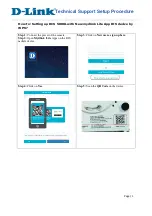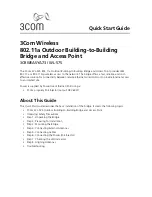
genie Basic Settings
27
N300 Wireless Router WNR2000v4
Internet IP Address
.
•
Get Dynamically from ISP
. Your ISP uses DHCP to assign your IP address. Your ISP
automatically assigns these addresses.
•
Use Static IP Address
. Enter the IP address, IP subnet mask, and the gateway IP
address that your ISP assigned to you. The gateway is the ISP’s router to which your
router should connect.
Domain Name Server (DNS) Address
. The DNS server is used to look up site addresses
based on their names.
•
Get Automatically from ISP
. Your ISP uses DHCP to assign your DNS servers. Your ISP
automatically assigns these IP addresses.
•
Use These DNS Servers
. If you know that your ISP does not automatically transmit DNS
addresses to the router during login, select this option, and enter the IP address of your
ISP’s primary DNS server. If a secondary DNS server address is available, enter it also.
Router MAC Address
. The Ethernet MAC address used by the router on the Internet port.
Some ISPs register the MAC address of the network interface card in your computer when
your account is first opened. They accept traffic only from the MAC address of that computer.
This feature allows your router to use your computer’s MAC address (this is also called
spoofing or cloning).
•
Use Default Address
. Use the default MAC address.
•
Use Computer MAC Address
. The router captures and uses the MAC address of the
computer that you are now using to configure the router. To configure the router, make
sure that you use the computer that is registered and allowed by the ISP.
•
Use This MAC Address
. Enter the MAC address that you want to use.
Basic Wireless Settings
The Wireless Settings screen lets you view or configure the wireless network setup.
The router comes with preset WPA2-PSK security. This means that the WiFi network name
(SSID), wireless network password (also referred to as the passphrase or network key), and
security option (authentication and encryption protocol) are preset in the factory. You can find
the preset SSID and password on the back panel of the router. The preset SSID and
password are uniquely generated for every device to protect and maximize your wireless
security.
WARNING:
NETGEAR recommends that you do not change your preset
security settings. If you do decide to change your preset security
settings, make a note of the new settings and store it in a safe place
where you can easily find it.
















































